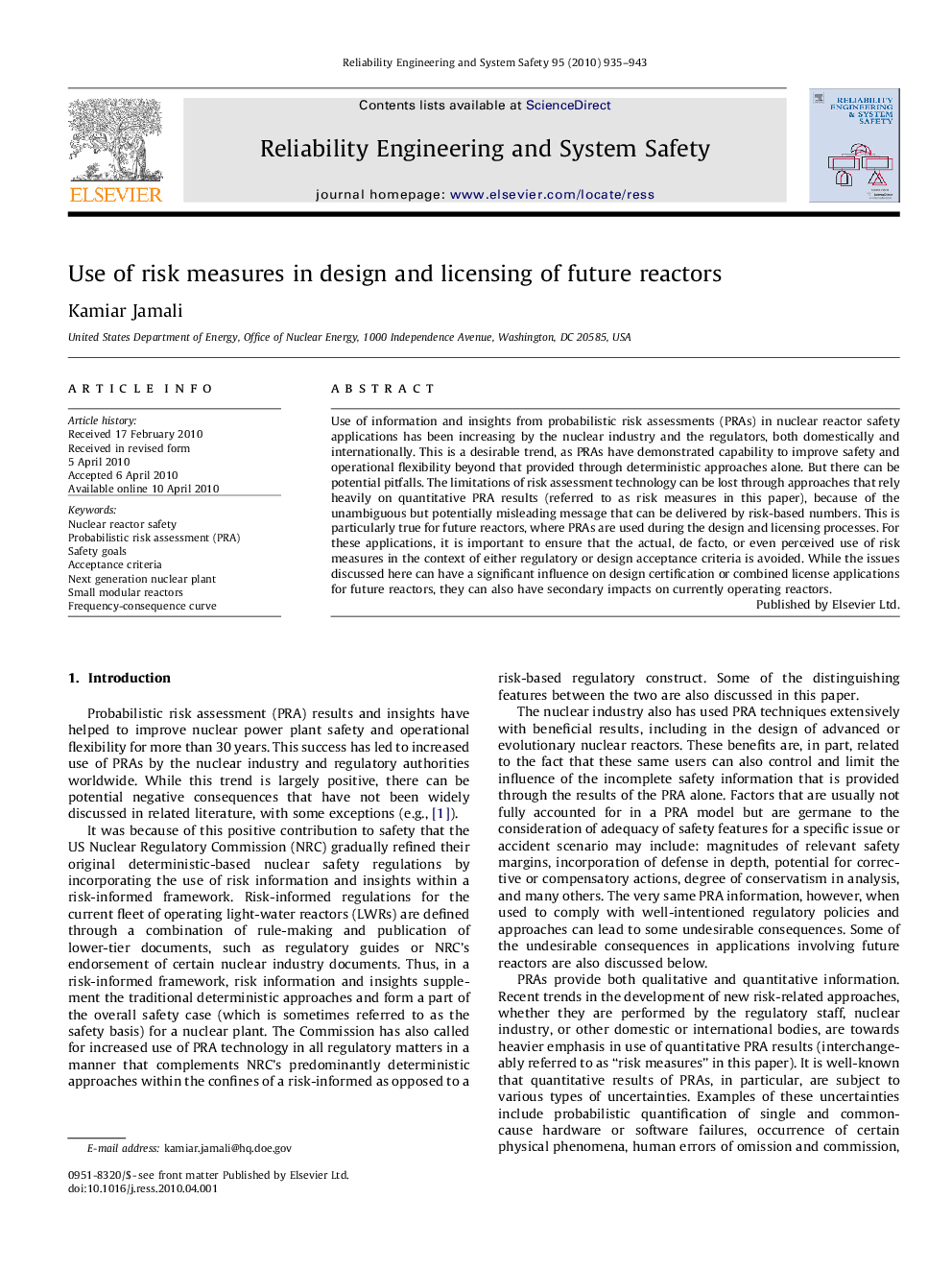| Article ID | Journal | Published Year | Pages | File Type |
|---|---|---|---|---|
| 808014 | Reliability Engineering & System Safety | 2010 | 9 Pages |
Use of information and insights from probabilistic risk assessments (PRAs) in nuclear reactor safety applications has been increasing by the nuclear industry and the regulators, both domestically and internationally. This is a desirable trend, as PRAs have demonstrated capability to improve safety and operational flexibility beyond that provided through deterministic approaches alone. But there can be potential pitfalls. The limitations of risk assessment technology can be lost through approaches that rely heavily on quantitative PRA results (referred to as risk measures in this paper), because of the unambiguous but potentially misleading message that can be delivered by risk-based numbers. This is particularly true for future reactors, where PRAs are used during the design and licensing processes. For these applications, it is important to ensure that the actual, de facto, or even perceived use of risk measures in the context of either regulatory or design acceptance criteria is avoided. While the issues discussed here can have a significant influence on design certification or combined license applications for future reactors, they can also have secondary impacts on currently operating reactors.
